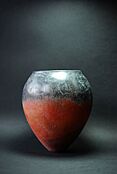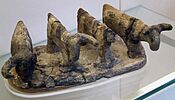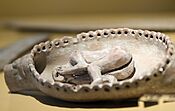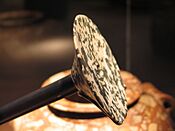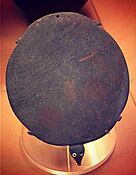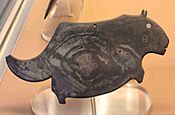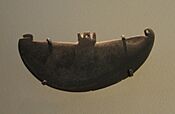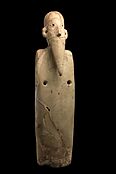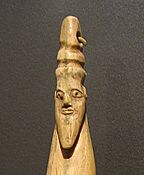Amratian culture facts for kids
| Dates | circa 4000 BC — circa 3600 BC. |
|---|---|
| Major sites | El-Amrah, Egypt |
| Preceded by | Tasian culture, Badari culture, Merimde culture |
| Followed by | Naqada II (Gerzeh culture) |
The Amratian culture, also known as Naqada I, was a group of people who lived in ancient Egypt a very long time ago. They lived in the southern part of Egypt, called Upper Egypt, between about 4000 BC and 3500 BC. This was before the famous pharaohs and pyramids!
Contents
What Was the Amratian Culture?
The Amratian culture gets its name from an archaeological site called el-Amrah. This site is about 120 kilometers (75 miles) south of Badari in Upper Egypt. El-Amrah was important because it was the first place where scientists found signs of this culture by itself.
Later, more was learned about this time from a place called Nagada. That is why it is also known as the Naqada I culture. During this period, people still made special black-topped pottery. They also started making "white cross-line pottery." This pottery had cool designs with white lines crossing each other.
People from the Amratian culture in Upper Egypt traded with groups in Lower Egypt (the northern part). For example, a stone vase from the north was found at el-Amrah. The people before them, the Badarian culture, had learned to heat a green mineral called malachite to make copper beads. The Amratians learned to shape this copper by chipping it.
They also got obsidian (a type of volcanic glass) and a little bit of gold from Nubia. Nubia was a region south of Egypt. They likely traded with people living in oases (green areas in deserts). They even imported cedar wood from Byblos and marble from Paros, which are far away!
New ways of building started to appear during this time. People began using adobe (mud brick) to build houses. This building style became very popular later on. However, it was not used everywhere yet.
People also started using oval or animal-shaped cosmetic palettes. These were flat stones used to grind makeup. The artwork on them was simple at first. It was not as detailed as the art seen later.
Each Amratian village had a special animal they thought was a god. People wore amulets (charms) shaped like humans, birds, and fish. When someone died, they were buried with food, weapons, small statues, decorations, malachite, and sometimes even dogs.
Cool Cosmetic Palettes
People first used a type of stone called siltstone for cosmetic palettes during the Badari culture. The first palettes in the Badarian and Naqada I periods were usually plain. They were often shaped like diamonds or rectangles. They did not have many decorations. Animal-shaped palettes became more common in the later Naqada II period.
Mysterious Bearded Figures
Many small statues, called figurines, have been found from the Naqada I period. These were carved from animal tusks. The figurines often have pointed beards and some signs of hair. They might show people wearing long cloaks.
Bearded men also appear in other ancient Egyptian artifacts from before the pharaohs. One example is the Gebel el-Arak Knife. The head covering on a figure called the "Lord of Animals" on that knife might be similar to the round headgear seen on many Naqada I figurines.
-
A figurine from the Ägyptisches Museum Berlin.
Other Amazing Finds
See also


